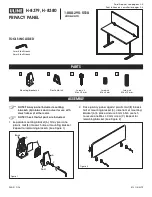
21
Appendix B
The synchronous mode of generator grid connection is divided into
quasi synchronous mode and self synchronous mode
The quasi-synchronous juxtaposition is to add the excitation of the
generator that is not put into the system, and adjust its voltage and
frequency. When the parallel conditions are met (that is, the voltage,
frequency, and phase are the same), put the generator into the system.
When the generator's outlet switch is closed, the circulating current in the
generator's stator circuit will be zero, which will not produce the impact
of current and electromagnetic torque. The quasi-synchronous period is
long, but the impact is small. Large generators should use
quasi-synchronous method.
From the same period in parallel, first turn the wheel generator set.
When the speed rises slightly below the rated speed of the set, the circuit
breaker is closed. At this time, the power system sends three-phase
impulse current to the stator winding of the generator to form a rotating
magnetic supersonic. Then the excitation system sends DC current to the
rotor windings of the generator to generate a magnetic super current,
which causes the power system to pull the generator into synchronous
operation. In the parallel process, the generator has suffered some damage
due to the inrush current. This is a disadvantage from the same period.


































